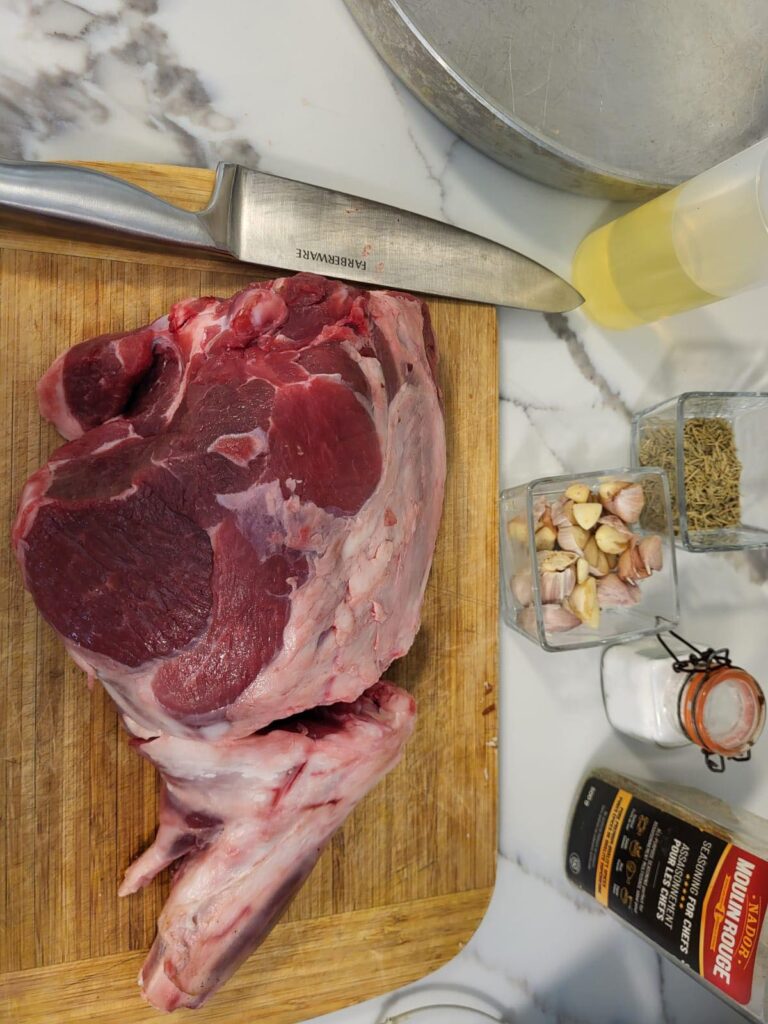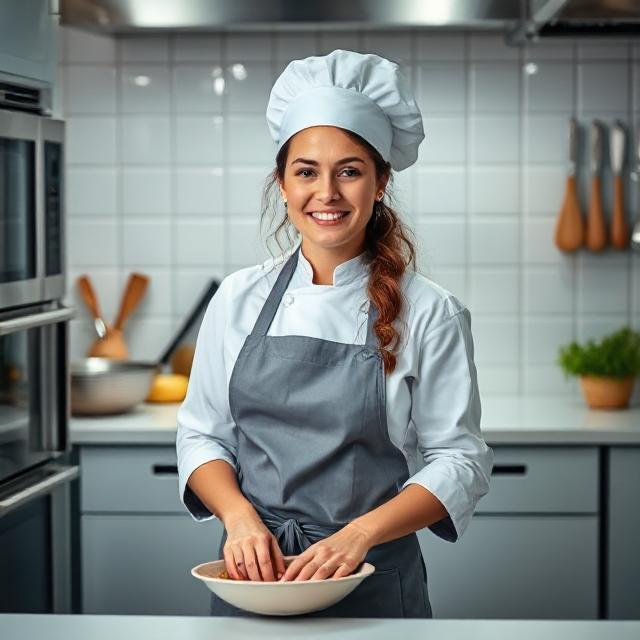How to Make the Perfect Roasted Leg of Lamb
Table of Contents
Key Takeaways
- A 4-6 pound works best for most family gatherings
- Garlic, rosemary, and lemon create the classic flavor profile
- Both bone-in and boneless cuts work well with this preparation
- Proper seasoning enhances rather than masks the natural lamb flavor
- The perfect roast has a caramelized exterior and pink, juicy interior
- This recipe works for special occasions and holiday celebrations
The Magic of Lamb as a Centerpiece Dish
Lamb has been a star at feasts for ages, from ancient times to today’s holiday meals. Seeing at the table makes any gathering feel special. It’s not just for its taste, but also for its deep meaning and health benefits.
Cultural Significance of Lamb in Holiday Meals
In many Christian traditions, lamb is key to Easter dinner. It stands for sacrifice, renewal, and new starts. This tradition comes from Passover, which influenced Easter.
In the Mediterranean and Middle East, lamb means hospitality and plenty. In Greek Easter, a whole lamb shows generosity and family bond. In the Middle East, offering lamb welcomes guests in the best way.
Is also a hit at non-religious events like weddings and harvest festivals. It’s great for big gatherings because it feeds many and looks impressive.
Nutritional Benefits
Lamb is not just for its cultural value; it’s also very nutritious. It’s a top protein source, giving you all the amino acids your body needs. A 3-ounce serving has about 23 grams of protein.
Also packed with vitamin B12, giving you almost all you need in one serving. This vitamin is key for your brain, blood, and energy. Plus, lamb has lots of zinc and iron, which are often missing in diets.
Yes, lamb has fat, but most of it is on the outside and can be trimmed. The fat it has is good for your heart and brain. Lamb from grass-fed animals has even more of these healthy fats, making it a smart choice for health-focused meals.
Selecting the Perfect
Choosing the right leg of lamb is key to a memorable holiday roast. The quality of your lamb greatly affects the taste, texture, and success of your dish. Taking your time to pick the best cut will impress your guests.
Bone-in vs. Boneless Options
When buying , you must decide between bone-in or boneless. Each choice has its own benefits that can change how you cook and present your dish.
Bone-in legs of lamb (5-7 pounds) offer enhanced flavor development. The bone helps distribute heat evenly and adds depth to the flavor. This option looks great on the table but can be tricky to carve.
Boneless legs (4-6 pounds) are convenient and versatile. They’re easier to season, cook evenly, and carve. Many butchers offer them pre-butterflied or rolled for your convenience.
Size Considerations for Your Gathering
Choosing the right size is important. It ensures you have enough for everyone without too much leftover. Here’s how to plan:
For bone-in lamb, plan for about ½ pound per person. Boneless lamb should be about ⅓ pound per person. These amounts consider the bone weight and typical hunger levels.
A 4-6 pound is perfect for 8-10 people. For bigger groups, you might need a larger cut or more legs. It’s better to have a bit extra—leftover lamb makes great sandwiches and more meals the next day.
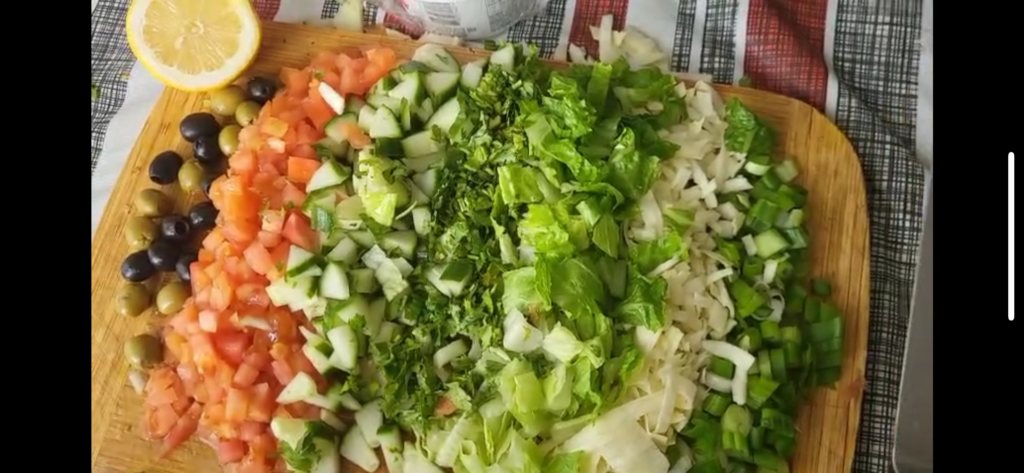
Quality Indicators to Look For
Finding high-quality requires paying attention to certain signs. These visual and tactile clues help you pick the best cut for your holiday roast.
Age of Lamb and Its Impact on Flavor
The lamb’s age greatly affects its taste. Younger (under 12 months) has a milder, more delicate flavor. Spring lamb, 3-5 months old, is especially tender and flavorful.
Older lamb has a stronger, more distinctive taste. For beginners, younger cuts are a better choice. They pair well with herbs and seasonings.
Color and Marbling
Look for lamb with a bright pink to light red color. Avoid dark red, which means older meat. The meat should feel fine-grained and firm.
Quality lamb has clean, white fat that’s evenly spread. The marbling—small streaks of fat—should be visible but not too much. These fat deposits melt during cooking, adding moisture and flavor.
Don’t be shy to ask your butcher about the lamb’s origin. American, New Zealand, and Australian have different flavors. American lamb is milder, while New Zealand lamb has a grassier taste due to its diet.
Essential Ingredients for the Perfect
The secret to a great is choosing the right ingredients. Each part adds to the dish’s rich, savory taste. Let’s look at the key elements that make this dish unforgettable.
The Star: 4-6 lb
A 4-6 pound leg of lamb is at the heart of this recipe. It’s perfect for cooking and serves 6-8 people. Bone-in options have more flavor because the marrow adds to the meat during roasting. Boneless cuts are easier to carve and cook evenly.
Look for meat that’s bright pink and has marbling for tenderness. The fat cap should be white or cream, not yellow. Always buy from a trusted butcher who knows the lamb’s origin and quality.
Aromatics: Garlic and Fresh Herbs
Aromatics are the base of any garlic-studded lamb recipe. They add complex flavors that enhance the lamb’s richness without overpowering it.
Preparing Garlic Cloves for Studding
Choose 6-8 fresh garlic cloves with tight skin. Peel and slice them thinly, about ¼-inch thick. These slivers should add flavor but be easy to insert into the meat.
When done right, the garlic melts into the lamb, creating pockets of flavor. Prepare the garlic just before studding to keep its oils fresh.
Choosing and Chopping Fresh Rosemary
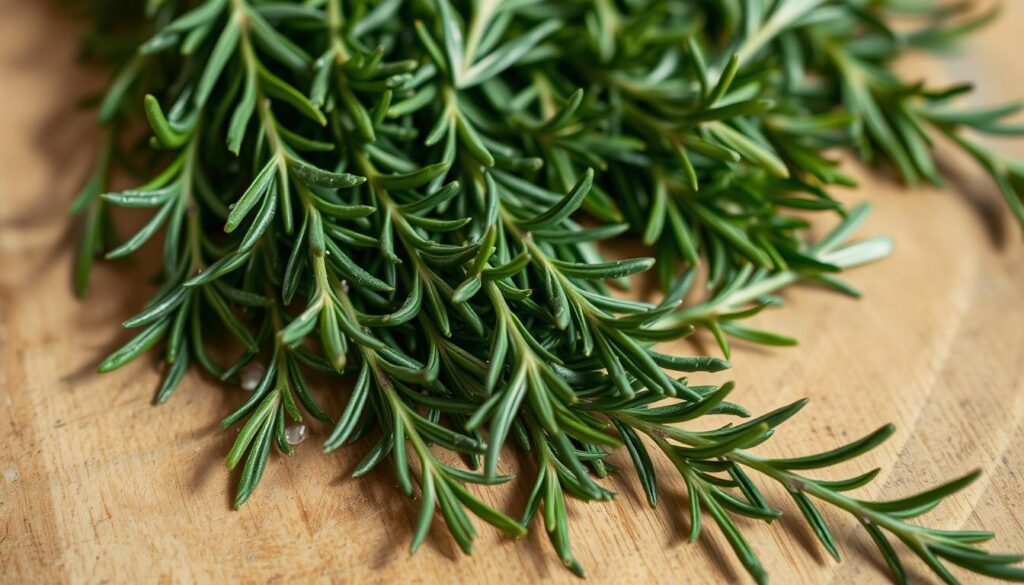
Rosemary is key for a classic rosemary lamb roast. Pick sprigs with bright green needles that spring back. The aroma should be strong and piney.
Strip 2-3 sprigs of their stems and chop the needles finely. This releases the herb’s oils, adding a bright, piney flavor. Fresh rosemary is better than dried, offering brighter taste and texture.
Citrus Elements: Lemon Zest and Juice
Citrus adds brightness and balance to the lamb. One medium lemon provides zest and juice for this recipe.
Grate the lemon peel carefully, avoiding the white pith. The zest adds intense citrus flavor without acidity. The juice tenderizes the meat and adds a fresh contrast to the savory flavors.
For the best flavor, zest the lemon just before adding it to your marinade. Store zest and juice separately in the fridge to keep them fresh.
Oils and Seasonings
The right oils and seasonings are crucial . They help create a flavorful crust and enhance the meat’s taste.
Olive Oil Quality Considerations
Use high-quality extra-virgin olive oil with a fruity taste. Three tablespoons will mix well with herbs and seasonings. The oil helps seasonings stick, promotes browning, and prevents burning.
Cold-pressed olive oils have better flavor and keep more nutrients. If you can, choose single-estate olive oils for a unique taste.
Salt, Pepper, and Seasoning Mix Options
Season your lamb with 1½ teaspoons of kosher salt for even distribution. Use freshly ground black pepper for the best aroma and flavor.
Add a tablespoon of seasoning mix for extra depth. You can use a beef seasoning blend or make your own. Here’s a comparison of seasoning options for your rosemary:
Seasonings should enhance the lamb’s flavor, not hide it. Apply them evenly and let them penetrate the meat before roasting for the best taste.
Preparing
Getting your leg of lamb ready for roasting is key. It ensures even cooking, rich flavors, and the right texture. Taking the time for these steps will make your dish much better.
Bringing to Room Temperature
Take your leg of lamb out of the fridge 1-2 hours before cooking. This critical step allows the meat to reach room temperature. It ensures even cooking by avoiding cold meat in a hot oven.
While the lamb warms up, prepare your seasonings and preheat the oven. The lamb should feel cool but not cold when you’re ready to season it.
Trimming Excess Fat
doesn’t need a lot of fat like some roasts do. Look at your leg of lamb and trim off any excess fat. Leave just a thin layer, about ¼ inch.
This thin layer of fat adds flavor and keeps the meat moist. It prevents a strong gamey taste while keeping the meat juicy.

Creating Garlic Slits in the Meat
For a garlic-studded lamb, slice 6-8 cloves of garlic thinly. Use a sharp knife to make small, deep incisions in the lamb at 1-inch intervals.
Make the slits about ¾-inch deep. This lets the garlic flavor infuse the meat without juices escaping. Insert a garlic sliver into each slit, making sure it’s fully inside.
This method lets the garlic flavor blend into the meat, these garlic pockets add incredible flavor.
Butterflying Techniques for Even Cooking
Butterflying your lamb can help with even cooking. This optional technique makes the meat flat and even.
To butterfly your lamb roast:
- Place the lamb fat-side down on your cutting board
- Make a lengthwise cut along one side of the bone (or through the thickest part if boneless)
- Stop before cutting all the way through
- Open the meat like a book
- If needed, make additional shallow cuts to create even thickness
Butterflying increases the surface area for seasonings and cooks faster. It’s great for larger cuts or if you prefer medium-rare lamb.
Seasoning and Marinating for Maximum Flavor
To make your truly special, start with the right herbs, spices, and marinating time. The perfect seasoning can turn your lamb into a dish that wows everyone. Let’s look at how to create a flavor that will make your lamb the highlight of any meal.
Creating the Perfect Herb and Garlic Rub
The key to a herb-crusted lamb is a balanced rub that boosts the meat’s taste. Mix 3 tablespoons of olive oil with the zest and juice of one lemon in a bowl. This citrus mix brightens the lamb’s flavor and tenderizes it.
Add 2-3 sprigs of finely chopped fresh rosemary, making sure to remove the woody stems. Rosemary’s piney scent is the heart of a classic rosemary , filling your kitchen with a unique aroma.
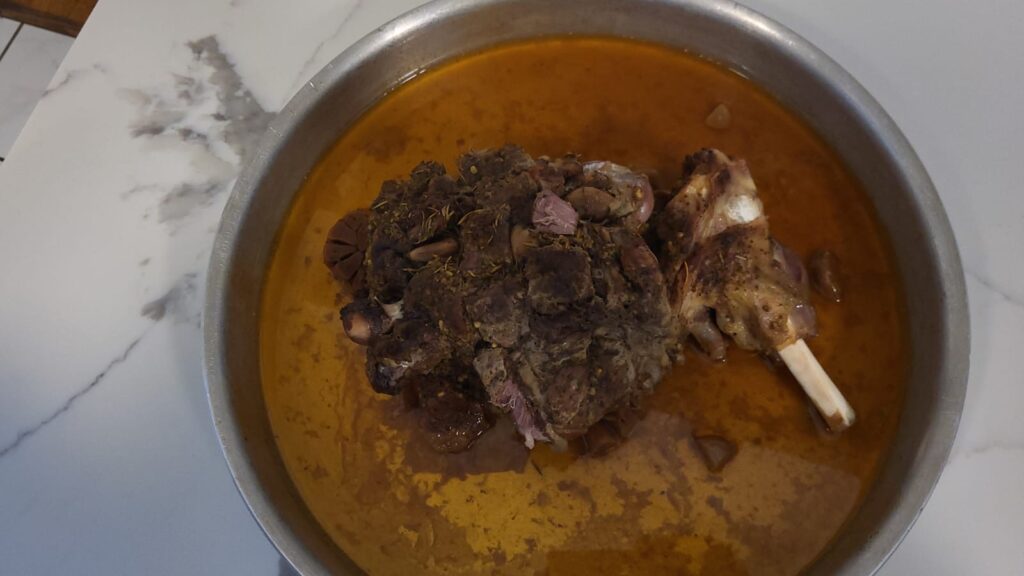
Include 1½ teaspoons of kosher salt, freshly ground black pepper, and 1 tablespoon of beef seasoning mix. For more depth, add 1-2 teaspoons of Dijon mustard. This adds a tangy touch and helps the marinade stick to the meat.
Whisk these ingredients until they form a paste. Rub this paste all over the lamb, making sure to cover every part. Don’t forget to season the bone end on bone-in legs, as it adds to the flavor.
Optimal Marinating Times
Marinating time is crucial for flavor. For the best taste, marinate your lamb for at least 4 hours. This lets the flavors soak deep into the meat.
Marinating overnight (8-12 hours) in the fridge is even better. The lemon juice tenderizes the meat, and the herbs and spices infuse fully. Keep the lamb in a sealed bag or covered container, turning it occasionally for even flavor.
If you’re short on time, a 1-hour rest with the rub still improves flavor. Let the lamb sit at room temperature for up to 2 hours. This starts the flavor infusion and helps the meat cook evenly.
Alternative Seasoning Combinations
While garlic-rosemary is classic, trying new flavors can make your lamb roast exciting. Different cuisines offer unique flavor profiles for memorable meals.
Mediterranean-Inspired Variations
Mediterranean flavors pair well with lamb. A Greek-inspired rub combines oregano, thyme, lemon, garlic, and olive oil. Add black olives and feta crumbles for the last 30 minutes of roasting.
For a Provençal twist, use lavender, herbes de Provence, and orange zest in your marinade. This southern French approach adds floral notes that enhance the lamb’s sweetness.
Middle Eastern Flavor Profiles
Middle Eastern cuisine loves lamb, offering rich seasoning traditions. Create a rub with cumin, coriander, cinnamon, and allspice, along with fresh mint and parsley.
A za’atar rub (thyme, sesame seeds, and sumac) gives your lamb a complex, aromatic crust. Harissa paste marinade adds gentle heat and depth, making your roast exotic.
Step-by-Step
Is all about the right temperature, timing, and technique. You want a nice, caramelized outside and a juicy inside. Here’s how to get that perfect result at home.
Preheating and Oven Setup
Start by heating your oven to 450°F (232°C) for the first sear. This high heat is key for a great crust on your lamb. Place the rack in the lower-middle to ensure good air flow.
If your oven heats unevenly, rotate the pan halfway through. Convection ovens should be 25°F lower to avoid overcooking.
Let your oven preheat for at least 20 minutes. Putting meat in too soon can mess up the cooking. A hot oven is essential for a perfect
Roasting Pan Preparation
Choose a heavy-duty roasting pan with 2-3 inch sides. It should hold juices but let heat circulate.
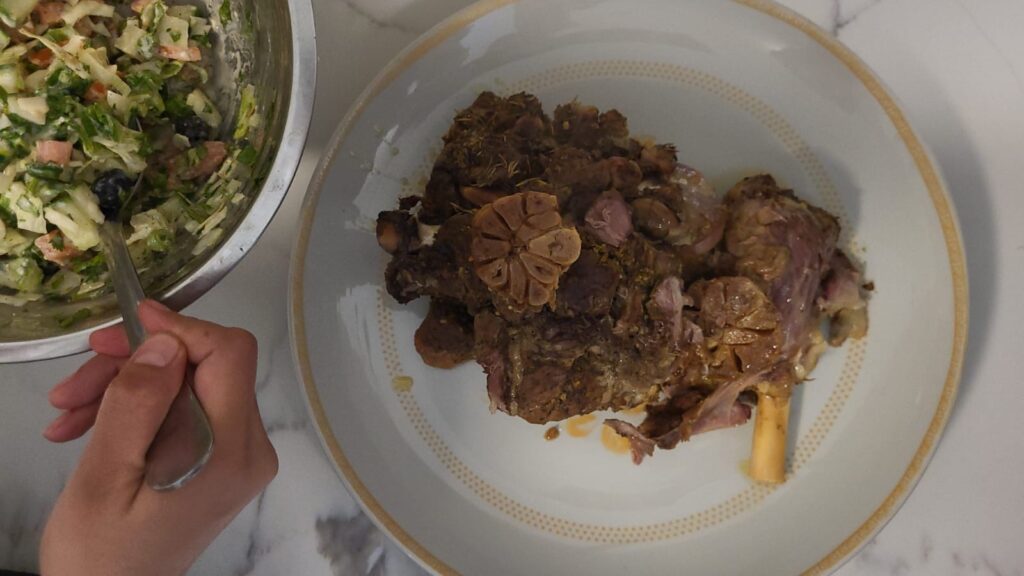
For bone-in legs, use a V-rack for even cooking. Boneless roasts can use onion, carrot, and celery slices as a rack. These add flavor to the sauce.
Put 1 cup of broth or wine in the pan. It prevents burning and keeps the meat moist. Add herbs for extra flavor.
Initial High-Heat Searing
The first 20 minutes at 450°F are crucial. They start the Maillard reaction, creating lots of flavor.
This high heat creates a flavorful crust. Don’t open the oven door during this time. It’s what makes slow-roasted lamb so tasty.
Reducing Temperature for Slow Roasting
After searing, lower the oven to 325°F (163°C). This slow heat cooks the lamb evenly without drying it out.
Baste the lamb with pan juices every 30 minutes. This keeps it moist and adds flavor. If it browns too fast, cover it with foil.
A 4-6 pound leg takes about 20 minutes per pound to cook. Be patient for tender, juicy meat.
Using a Meat Thermometer for Perfect Doneness
A meat thermometer is essential for perfect doneness. Visual checks can be wrong, especially with big cuts like . Digital thermometers give the most accurate readings.
Placement of Thermometer
For accurate readings, put the thermometer in the thickest part of the meat, away from bone. Bones can give false readings.
For bone-in legs, angle the thermometer to avoid bone. Remember, the meat will rise 5-10 degrees after you take it out of the oven. So, remove it when it’s 5-10 degrees below your target.
Resting and Carving Your Masterpiece
Getting your lamb just right doesn’t stop when it comes out of the oven. The right resting and carving make all the difference. These steps keep your lamb juicy and look great on the plate.
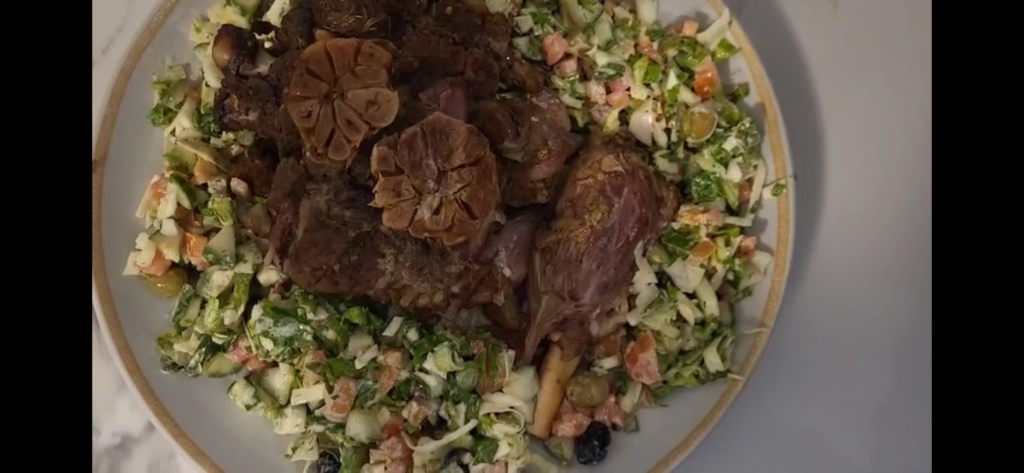
The Science Behind Resting Meat
When lamb roasts, the heat pushes juices to the center. Cutting it right away lets these juices spill out, not stay in the meat.
Resting lets the meat’s proteins relax and reabsorb these juices. This makes the meat juicy all the way through. Rest for 20-30 minutes, covered with foil to keep it warm.
This time also helps the meat cook a bit more. It’s perfect for making a mint sauce or glaze. You can also finish your side dishes.
Step-by-Step Carving Guide
You need a sharp knife for carving. Dull knives tear the meat and lose juices. Use your sharpest knife and a cutting board with a groove.
Carving Bone-in Lamb
Place the rested lamb on the board with the shank away from you. Start with a cut at the thicker end down to the bone. Then, slice across this cut, angling slightly toward the bone.
Carve from the thicker end to the shank, making slices about ¼-inch thick. Adjust your angle for each section to get the best cuts.
Slicing Boneless Roasts
For boneless lamb, remove any twine first. Place the roast on the board with the bone side down.
Slice straight down across the grain, making even slices about ¼-inch thick. Boneless roasts are easier to slice, making your dish look elegant.
Arrange the carved meat on a warmed platter. Drizzle with accumulated juices from the board and pan. This adds flavor and keeps the lamb moist for a memorable meal.
Troubleshooting Common Issues
When you’re slow-roasting lamb, you might run into some problems. Even the most skilled cooks can face challenges. Knowing how to fix these issues quickly can save your special meal. Let’s look at some common problems and how to solve them.
Dealing with Undercooked or Overcooked Lamb
If your lamb is too rare, don’t worry. Just put the slices back in the pan with some broth or wine. Cover it with foil and bake at 325°F for 5-10 minutes. Keep checking to avoid overcooking.
If your lamb is too well-done, slice it thinly. Serve it with extra sauce or gravy to add moisture. A warm au jus made from the pan drippings can help. It adds moisture and flavor, especially for Easter lamb dinners.
Fixing Seasoning Problems
Seasoning issues can be under-seasoned or over-seasoned. For bland lamb, make a flavorful sauce by reducing pan drippings with wine and herbs. A mint or herb sauce can also add bold flavors.
If your lamb is too salty, use lemon wedges or a yogurt-based sauce. These can balance out the salt and improve the flavor.
Addressing Tough or Dry Meat
Tough meat often comes from overcooking or bad preparation. If your lamb is tough, slice it thinly against the grain. This makes it easier to chew.
For dry meat, make a warm sauce from the pan drippings, wine, and butter. Serving it with moist sides, like ratatouille or braised vegetables, can also help.
Conclusion
Is a joy that adds to your cooking skills. It’s a classic dish that impresses everyone. The flavors are rich, and the meat is tender, making it perfect for any holiday.
Success in cooking this dish depends on a few things. You need to choose good meat, season it right, watch the temperature, and let it rest. Each time, you’ll get better at judging the timing and temperature.
Don’t stick to just rosemary and garlic. Try a mint-glazed lamb for a fresh twist. Keep track of your cooking times and seasonings to improve with each try.
Lamb is great for many occasions, from Easter to Christmas. Serve it with seasonal veggies and sides for a memorable meal. Your guests will remember it for a long time.
With the tips from this guide, you’re set to make a stunning lamb dish. Your perfectly is waiting. Happy cooking!
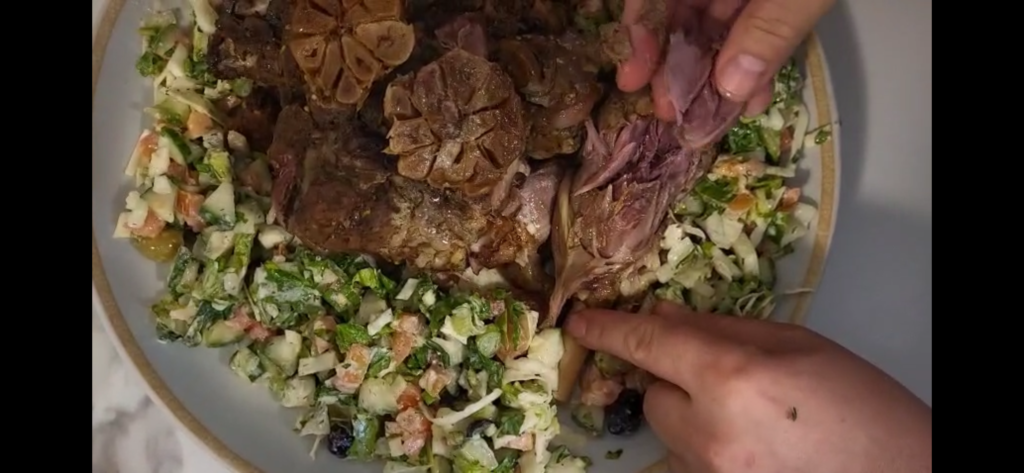
FAQ
How long should I cook per pound?
For a 4-6 pound , cook for about 20 minutes per pound. This includes a 20-minute high-heat sear at 450°F and then slow roasting at 325°F. Always check with a meat thermometer for the best results.
What internal temperature should be cooked to?
The ideal internal temperature varies by doneness. For rare, aim for 125°F. For medium-rare, it’s 130-135°F. Medium is 140-145°F, medium-well is 150-155°F, and well-done is 160°F. Remember, the temperature will rise by 5-10°F during resting.
How long should I let rest before carving?
Let the lamb rest for 20-30 minutes before carving. Cover it loosely with foil to keep it warm. This step ensures the juices spread evenly, making the meat juicy and flavorful.
Should I marinate overnight?
Marinating overnight (8-12 hours) in the fridge is best. It tenderizes the meat and infuses flavors. Even a 1-hour rest with the rub will improve the taste significantly.
What’s the difference between bone-in and boneless ?
Bone-in legs offer more flavor and a better presentation. They’re more challenging to carve but have a richer taste. Boneless legs are easier to season and carve, making them great for beginners.
How many people will a 5-pound feed?
A 5-pound bone-in leg feeds 8-10 people. For boneless, it’s 12-15 people. Plan for ½ pound per person for bone-in and ⅓ pound for boneless.
What are the best herbs to use ?
Rosemary is a classic choice for lamb, offering a piney flavor. Thyme, oregano, mint, and sage are also great. For Mediterranean flavors, try oregano and thyme. For Middle Eastern, use mint and parsley with spices.
How do I fix lamb that’s too dry?
For dry lamb, make a warm sauce with pan drippings, wine or broth, and butter. Slice the meat thinly and serve with the sauce. Sides with sauce can also help.
Can I use dried herbs instead of fresh for the lamb rub?
Yes, use dried herbs but reduce the amount. Use about one-third of what you would fresh. Crush dried herbs to release their oils for better flavor.
What side dishes ?
Roasted potatoes, mint sauce, and spring vegetables are classic choices. For Mediterranean, try Greek lemon potatoes and tabbouleh. Middle Eastern lamb goes well with couscous and cucumber-yogurt salad.
How to Make the Perfect Roasted Leg of Lamb
Description
This tender, juicy is infused with garlic, rosemary, and lemon, then slow-roasted with vegetables for an unforgettable one-pan meal. Perfect for Easter, family dinners, or special occasions.
Ingredients
1 leg of lamb (4–6 lbs), bone-in or boneless
Nutrition Facts
Servings 8
- Amount Per Serving
- Calories 485kcal
- % Daily Value *
- Total Fat 32g50%
- Saturated Fat 12g60%
- Trans Fat 0.2g
- Cholesterol 135mg45%
- Sodium 520mg22%
- Potassium 720mg21%
- Total Carbohydrate 8g3%
- Dietary Fiber 2g8%
- Sugars 2g
- Protein 38g76%
- Vitamin A 180 IU
- Vitamin C 6 mg
- Calcium 45 mg
- Iron 3.8 mg
* Percent Daily Values are based on a 2,000 calorie diet. Your daily value may be higher or lower depending on your calorie needs.
Note
This recipe is perfect for special occasions. Infused with garlic, herbs, and lemon, it’s slow-roasted to juicy perfection with vegetables for a complete, flavorful, and memorable one-pan meal.

